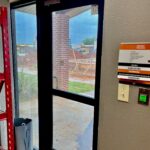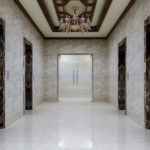This article left me wordless: Fire Alarm Causes Panic in Housing Facilities
Early on April 1, multiple false fire alarms were pulled in the housing quad. According to Interim Executive Director of Housing and Residential Life Lynn Hendricks, who sent an email to all housing students Monday morning following the incident around noon, slippery substances were placed on stairwells and hallways, and some doors were tied to prevent individuals from exiting their dorm rooms.
and reminded me to post this one, which left me wordless for different reasons: McComas Hall enforces building regulations, fire code
Many faculty and students are getting fired up about the newly-enforced building regulations in McComas Hall.
John Forde, head of the communication department, said Mississippi State University’s safety officer advised all fire doors be shut at all times during a building walk-through on March 4.
“We had a safety inspection, and we were encouraged to keep all the fire doors closed as much as possible. One of the highest priorities is to keep everybody safe because we have to do all we can at the university to take care of everybody on campus,” Forde said. “Any time you make any change, there’s always a little adjustment period, but overall, we’re just trying to follow what’s recommended by the university.”
…Goodman also pointed out the building is made entirely of concrete, a substance which does not burn⎯only disintegrates at temperatures reaching over 1,500 degrees Fahrenheit.
“In effect, we’ve created a daily risk in return for some rather nebulous benefits should the concrete block ever catch fire. I’m guessing each student has to go through at least two fire doors to get to a classroom, which means four times a day going to class, they have a chance to get hit by the door,” he said. “We have about 60 to 70 percent female students, most of which can’t see out the window, and most of them could get knocked down the stairs if somebody just pushed the door open without looking.”
“Rather nebulous benefits”? How about investing in some code-compliant hold-open devices? Just a thought.
You need to login or register to bookmark/favorite this content.





It looks like Goodman is just some egghead professor spouting his own opinion.
It amuses (and irritates) me that a supposed educated person would proffer such a strong opinion without first reviewing all of the facts. I’m mostly amused that he went as far as to research the integrity of concrete when exposed to high temps, but never bothered to see if there were any standards, codes, or local regulations pertaining to Fire Doors.
I agree completely. The fact that the building is concrete doesn’t remove the risk of fire…what about all of the contents of the building? There have been plenty of “fireproof” buildings that have experienced devastating fires. One was the Iroquois Theater and we know how that turned out: http://idighardware.com/2010/12/iroquois-theater-fire/
I hesitated to comment because I feared the information was an April fool’s joke but there are people who think like those in the article. Sometimes in today’s world, I wonder if ignorance is viewed as a virtue. A furnace is by and large made of materials that do not disintegrate in a fire. The point being in reference to a building fire is not that the structure is impervious to fire (I remember one of the hotels of my youth with a four story message on its side: “Fireproof”), the concern is the fuel within the structure.
I fought “we don’t want to be bothered opening a door or finding one latched, and why do you insist on stairwell doors being kept shut” four 35 years in several modern hospitals. Hospital codes have some very particular requirements to keep people pretty much safe in place for long enough to get them evacuated so long as the occupants do not derange the features. There structural elements are strong enough and protected well enough to last for the time needed to evacuate. Closed doors to stair enclosures, smoke compartment walls, horizontal exit walls, exit passageways and enclosing areas have a higher degree of hazard than the typical area are key elements in occupant safety.
My memory is fuzzy on the exact details of a Minneapolis hospital fire, in the 1950’s I believe, but the fire started in the lobby with a live Christmas tree. Stair enclosure doors were blocked open on all floors in a stair near the fire. Smoke poured up the stair enclosure and began flowing into the four (or five) floors. As I recall there were 6 or 7 fatalities, all on th fourth floor where the staff could not get to the stair door to unblock and close it. I think a nurse tripped on something in the corridor (also a violation) on her way and was knocked out briefly. So, hopefully Mr. Goodman got straightend out and is now smart about why all these expensive features are put in structures. Mr Forde was a credit to the system, Mr. Goodman, not so good in my opinion.
Here’s a link to some information about the Minneapolis fire: http://hclib.tumblr.com/post/38650257032/doctors-memorial-eitel-hospital-fire-december
I read several accounts and there was not a lot of attention given to the open fire doors…most of the focus was on Christmas trees in hospitals.